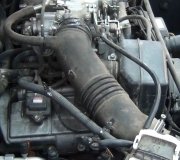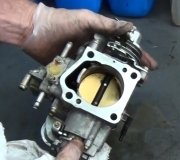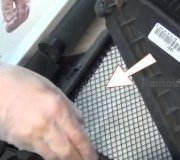Well, I can't believe I did this. But I need some advice. I was working on my sister's corsica for her (I'm a slowly learning DIYer, not a mechanic) and I needed to flush her radiator. This is something I have done many times on my own Silverado. No problem right? Well I instead of doing it the way I always have in the past, by just drianing from the petcock and letting it run with the flush in radiator, I decided to try back flushing it using this kit I found at the store made by Prestone. So based on the diagram and explanation on the kit, I installed the valve on what I thought was the heater hose (it was the only rubber hose coming "off of the firewall and into the top of the engine", which is word for word what the kit said) Upon closer inspection this was the brake booster line that ran directly into the air intake. I figured it out pretty quickly once I realized that water was coming out of airbox. Well, I turned off the water and opened up the air box. But basically I had pumped water in the the air intake manifold. I knew enough to know that the worst thing to do was start the engine. I have still not started the engine. Instead, I opened everything up to air out. I hooked up a shopvac to the air intake hose and opened the throttle body that controls air intake. I let it sit like that with the shopvac running for a few hours. That seemed to help. It sucked a decent amount of water out, and no more moisture was coming out when I unhooked it. I checked the oil and there does not appear to be any water in it. The line that runs from the oil reservoir to the top of the engine block where the water got into has what appears to be a one way valve on the end of it that I think stopped any water from getting into the oil.
I left everthing opened up like that to air out overnight. I still have not started the engine because I am afraid of sucking water further into the engine and potentially bending valve stems. Do you have any suggestions on preventative measures I can take or action I should take to prevent damage to the engine?
SPONSORED LINKS
Friday, April 10th, 2009 AT 1:54 AM




